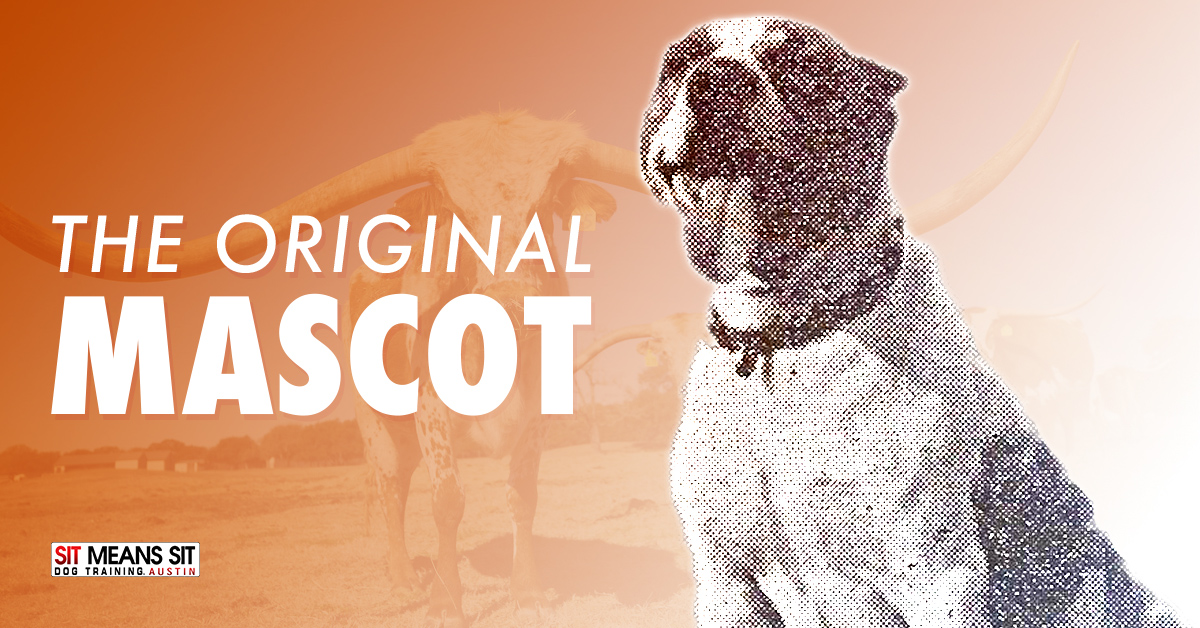
The Original UT Mascot
If you’re a University of Texas football fan, you’ve probably already heard the story of Bevo, and might also assume he was the team’s first mascot. But before we dive into why that surprisingly isn’t the truth, let’s go over Bevo’s history and how he became to be UT’s famous longhorn.
The False Tale of Bevo
According to a legend, one late night, a group of Texas A&M Aggies decided to brand “13-0” on a poor unlucky longhorn owned by the Univerity. Apparently, from their, UT students decided to alter “13-0” to the name “Bevo” in an attempt to modify a negative situation into a good one. Due to this account, Aggies have tried to claim the origin of Univerity’s mascot and name. Although that makes for an exciting story, it doesn’t quite line up with the truth.
How Bevo Actually Came to Be
What actually happened played out on the last day of November 1916 – Thanksgiving Day. During halftime of the annual game with A&M, two West Texas cowboys presented a frightened longhorn steer to the UT student body.
The steer, whose fur was a surprising shade of orange, had previously been purchased through dollar contributions from 124 alumni. Once bought, the longhorn was arranged to be transported to the University’s campus, barely making it in time for the game.
After accepting the new mascot, UT finished up the game with a win of 21-7. After the news spread, some papers favored branding the steer with a large “T” on one side and the score of “21-7” on the other. Others argued against the act, calling it inhumane and just plain animal cruelty. Some hoped the steer would be tamed appropriately and be able to graze and roam on the Forty Acres. While Editor Ben Dyer stated in the Alcalde magazine, “His name is Bevo. Long may he reign!”
Months later, in February of 1917, Texas A&M Aggies took it upon themselves to end the debate and branded the poor longhorn “13-0” – the score of a 1915 football game. A week after the incident, rumors were swirling of Aggies planning to downright kidnap the poor creature. So in hopes of keeping the mascot safe, it was transported to a ranch 60 miles west of Austin. Two months later, the US entered WW1 and, all attention from the Univerity went to the conflict in Europe.
Sadly since taking care of the steer was costing the Univerity 50 cents a day and they had low hopes of taming it enough to be able to roam the campus or stay in the stadium, it was fattened up and served as the main course for the January 1920 football game. The Aggies were invited, served the side they branded, and even presented the hide – still depicting “13-0.”
So since the name “Bevo” was thought of long before the steer was ever branded, many wonder how Editor Ben Dyer came up with it. While there are many speculations, there is one that reigns in as the most credible. A comic strip that ran every Sunday in newspapers, including those throughout Texas, created a nationwide fad to nickname friends with an “o” at the end. And with the term “beeve” being the plural form of beef, many believe Dyer just added to the naming fad by creating “Bevo.”
The biggest takeaway here is UT’s mascot was indeed named by Autin residents and not those from College Station (even though they may try to make you believe the opposite).
But Did You Know About Pig Bellmount?
Enough about Bevo, who is Pig Bellmount? Many find it hard to believe there was ever a time before Bevo, but a tan & white bull terrier born in 1914 would beg to differ. Owned by the first UT athletic director L. Theo Bellmont, Pig would accompany his owner to the Forty Acres and even explore the University’s campus in search of affectionate students ready to hand out belly rubs.
During poor weather days, the pooch would even seek shelter in classrooms (warmly welcomed too).
And while the University’s players were known as the Longhorns, they still yet to have a mascot. Although the canine’s fame quickly grew from the student body to football fans who noticed one of the players, Gus “Pig” Dittmar, and the pooch residing next to one another at one of the games. It was observed that both the player and the pup stood on the sidelines in a bowlegged manner, and in the player’s honor, the terrier was soon named Pig.
Sadly the pup was hit in a fatal car accident in 1923. Afterward, a massive funeral was held for the dog and, it’s said that over 1,000 came to pay their respects to the beloved canine. The University decided to bury Pig on campus, and you can still visit his resting spot today.
Pig’s eulogy was delivered by UT’s then Dean, Dr. Thomas U. Taylor, who said the terrier, and first mascot of the University would, “take his place by the side of the great dogs of the earth.”
